废物为何重要
减少运营废弃物、填埋废弃物和包装废弃物是我们业务的基础。我们致力于建立闭环和零废弃流程,以支持我们的循环战略和向更循环经济的过渡。我们的废弃物减少工作通过减少排放和环境影响、通过减少材料使用来节约宝贵资源以及帮助我们服务的社区,为整个供应链增加了价值。我们还通过提供重量更轻、更具成本效益的产品为客户提供价值。通过我们的废弃物减少工作,我们减少了运营中的排放,并为应对全球环境废弃物挑战做出了贡献。
治理
71%
从垃圾填埋场转移的废物
我们在全球范围内努力减少浪费,每个工厂都在努力实现 2025 年的目标。
对于所有工厂(不包括传统的 Caraustar 工厂),我们创建了详细的废物矩阵,以帮助我们了解每个工厂的废物流、每个废物流的处置方法(回收、再利用、填埋等)并管理进度。废物矩阵还可用作协作工具,使工厂能够比较常见废物流的管理。我们正在通过每月或每季度的全体会议扩大工厂之间的合作,在此期间,工厂的成功案例和关键经验会与我们全球工业包装 (GIP) 业务的更多受众分享。我们还在与废物收集合作伙伴提高协作和透明度,以支持我们持续推进废物管理并更详细地了解废物流。
尚未实现 2025 年废物转移目标的每个工厂(不包括传统的 Caraustar 工厂)的管理层负责制定季度或半年度路线图,以评估进入垃圾填埋场的所有废物流并制定转移策略。每个工厂至少包括前三个废物转移项目,并报告相关成本削减、垃圾填埋场减少量和每个项目的状态。我们的废物转移路线图可以深入了解我们的工厂及其废物管理进展。例如,Greif 哈德姆柯伊 土耳其团队利用废物路线图评估其废物流,并实现了其工厂 90% 废物转移的目标.
2018 年,Greif 与 Operation Clean Sweep (OCS) 建立了合作伙伴关系,该组织致力于防止塑料进入环境,以扩大我们减少塑料废物的承诺。通过合作,我们承诺在我们的工厂进行审计,以评估我们的塑料树脂处理操作,并实施良好的内部管理和颗粒、薄片和粉末控制措施。我们已经在宾夕法尼亚州哈兹尔顿、德克萨斯州休斯顿和肯塔基州斯特林山的工厂进行了审计,并将在 COVID-19 疫情期间能够安全进行审计时恢复审计。
2021 年,我们将继续将 Caraustar 旧设施纳入我们的废物管理目标,并制定实现 2025 年目标的路线图。我们还在评估废物减少对我们的业务和客户的长期和战略影响,以支持制定新的 2030 年废物目标。我们将继续与客户合作,实现他们的可持续发展目标。
目标与进展
2018 年,我们制定了目标,到 2025 财年末,全球所有 Greif 生产设施的 90% 废物将不再填埋。今年,我们还开始纳入来自我们原有 Caraustar 设施的废物数据。2020 年,我们在全球范围内将 71% 的废物从填埋场转移。
进步:
|
2020 财年* |
90%+ 改道设施 |
99%+ 改道设施 |
实现零废物填埋的设施 |
||
|---|---|---|---|---|---|
|
全部的 |
109 |
45 |
39 |
||
|
北美 |
38 |
8 |
5 |
||
|
欧洲 |
51 |
31 |
29 |
||
|
拉美 |
8 |
0 |
0 |
||
|
亚太地区 |
12 |
6 |
5 |
||
表现
废物流
|
|
2017 财年 |
2018 财年 |
2019 财年 |
2020 财年 |
|---|---|---|---|---|
| 危险废物 |
|
|||
|
填埋废物总量 |
527 |
1,639 |
2,428 |
3,608 |
|
垃圾填埋 |
527 |
1,292 |
1,161 |
2,989 |
|
焚烧(无能量回收)**** |
- |
347 |
1,267 |
619 |
|
非填埋总量* |
7,109 |
14,105 |
20,725 |
19,199 |
|
焚烧(带能量回收)** |
1,202 |
3,372 |
4,073 |
3,275 |
|
已堆肥*** |
- |
0 |
0 |
1 |
|
回收† |
2,011 |
7,604 |
14,084 |
14,160 |
|
重复使用†† |
399 |
1,513 |
651 |
706 |
|
回收††† |
194 |
217 |
366 |
376 |
|
杂项(非垃圾填埋场)†††† |
3,303 |
1,399 |
1,551 |
681 |
|
全部的 危险废物 |
7,638 |
15,744 |
23,153 |
22,807 |
|
无害废弃物 |
|
|
||
|
填埋废物总量 |
57,403 |
54,594 |
33,837 |
137,211 |
|
垃圾填埋 |
57,403 |
54,110 |
33,380 |
137,066 |
|
焚烧(无能量回收)**** |
- |
485 |
457 |
151 |
|
非填埋总量* |
161,796 |
257,219 |
184,357 |
326,546 |
|
焚烧(带能量回收)** |
945 |
2,054 |
2,950 |
17,006 |
|
已堆肥*** |
15,277 |
35 |
15,784 |
49,734 |
|
回收† |
111,861 |
231,997 |
141,217 |
212,075 |
|
重复使用†† |
17,147 |
11,641 |
12,321 |
19,441 |
|
回收††† |
13,187 |
9,439 |
9,847 |
11,701 |
|
杂项(非垃圾填埋场)†††† |
3,379 |
2,052 |
2,239 |
16,589 |
|
无害废弃物总量 |
219,199 |
311,813 |
218,194 |
463,757 |
|
废弃物总量(危险和非危险) |
226,835 |
327,557 |
241,347 |
486,564 |
笔记:
- 传统的 Caraustar 设施于 2020 财年纳入废物报告范围。
非填埋:包括化学-物理、能量回收焚烧、回收、再利用、再生、堆肥和燃料混合处理方法。
焚烧(能量回收):涉及燃烧固体废物以获取能量的处理方法。
堆肥:涉及固体或液体操作废物的生物分解的处理方法。
焚烧(无能量回收):涉及燃烧固体废物的处理方法,不会产生能量。
回收:涉及分离、准备和向最终用户制造商销售可回收材料的处理方法。
重复使用:多次使用材料作为其原始用途的处理方法。
回收:从回收材料中提取和转化材料以供再次使用的过程的处理方法。
†††† 杂项(非垃圾填埋场):之前未提及的所有其他处理方法,包括深井注入和现场储存,这些方法在 2017 年单独报告。
EARTHMINDED 生命周期服务 – 估计鼓轮和 IBCS 已修复*
|
|
2016 财年 |
2017 财年 |
2018 财年
|
2019 财年
|
2020 财年
|
|---|---|---|---|---|---|
|
回收利用 |
1,045,093 |
904,883 |
849,498 |
831,576 |
968,296 |
|
钢鼓 |
689,513 |
534,369 |
571,355 |
509,884 |
562,980 |
|
聚鼓 |
277,672 |
212,272 |
161,447 |
243,186 |
358,280 |
|
中型散货箱 |
77,908 |
158,242 |
116,696 |
78,506 |
47,036 |
|
翻新 |
3,808,242 |
3,218,885 |
3,258,848 |
3,533,358 |
3,276,259 |
|
钢鼓 |
3,072,348 |
2,565,052 |
2,713,025 |
2,699,393 |
2,483,485 |
|
聚鼓 |
375,307 |
321,188 |
244,497 |
194,011 |
178,627 |
|
中型散货箱 |
360,587 |
332,645 |
301,326 |
639,954 |
614,147 |
|
总收集量 |
4,853,335 |
4,136,828 |
4,105,936 |
4,348,706 |
4,164,585 |
|
钢鼓 |
3,761,861 |
3,099,633 |
3,284,380 |
3,193,049 |
2,971,549 |
|
聚鼓 |
652,979 |
535,460 |
405,944 |
437,197 |
536,281 |
|
中型散货箱 |
438,495 |
501,735 |
415,612 |
718,460 |
656,755 |
|
通过修复和再利用节省的原始材料(公吨) |
71,573 |
63,111 |
63,587 |
76,415 |
71,149 |
|
钢 |
65,743 |
56,200 |
57,664 |
66,860 |
62,016 |
|
高密度聚乙烯 |
5,830 |
5,150 |
4,243 |
5,897 |
5,553 |
|
木头 |
1,761 |
1,680 |
3,659 |
3,580 |
|
|
回收节省的原始材料(公吨)*** |
17,402 |
18,755 |
16,644 |
14,117 |
14,358 |
|
钢 |
13,288 |
13,463 |
12,697 |
10,273 |
10,215 |
|
高密度聚乙烯 |
3,817 |
4,580 |
3,385 |
3,402 |
3,871 |
|
木头 |
297 |
712 |
562 |
442 |
272 |
笔记:
- 通过修复和再利用节省的原始材料数据已被重新表述,以标准化各地区的单位。
根据翻新包装的数量和平均包装规格(北美和欧洲)进行估算。
根据回收包装的数量和平均包装规格(北美和欧洲)进行估算。
REBU – 估计 FIBCS 已修复 (EMEA)*
|
|
2017 财年 |
2018 财年 |
2019 财年 |
2020 财年 |
|---|---|---|---|---|
| 收集的 FIBC 总数 | - | 316,324 |
275,732 |
242,000 |
|
翻新 |
- |
224,418 |
179,912 |
167,000 |
|
回收利用 |
- |
91,906 |
95,820 |
75,000 |
|
节省的原生聚乙烯总量(公吨)** |
- | 727.6 |
634.2 |
556.6 |
|
通过修复和再利用节省的原生聚乙烯(公吨)*
|
- |
516.2 |
413.8 |
384.1 |
|
通过回收节省的原生聚乙烯(公吨)** |
- |
211.4 |
220.4 |
172.5 |
**根据翻新包装的数量和平均包装规格估算(欧洲)
*** 根据回收包装数量和平均包装规格估算(欧洲)
鄂木斯克锯末废料回收
2020 年 7 月,Greif 位于俄罗斯鄂木斯克的全球工业包装 (GIP) 工厂实施了一种创新方法,将锯末转化为隔热材料,以减少进入垃圾填埋场的木材废料。在生产 Clovertainers 的过程中,该工厂每年产生多达 7 吨的锯末,这是他们最大的废物来源,占被送往垃圾填埋场的废物的 39%。为了减少进入垃圾填埋场的废物,该团队开始寻找锯末的回收解决方案,并发现他们可以将其加工成用于托盘生产的组件。经过加工后,它可以卖给农民,用作冬季牲畜的隔热材料,也可以卖给建筑公司用作燃料。结果,他们减少了进入垃圾填埋场的废物,并实现了成本节约。
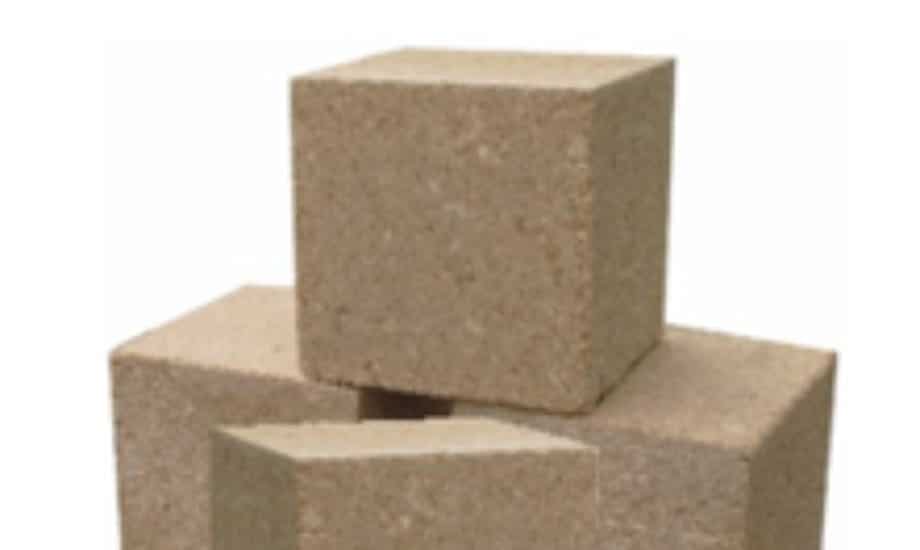
将废物转化为燃料
2019 年,Greif 与我们的一家废物管理合作伙伴合作,确定了我们运营中使用的可进入其工程燃料计划的材料,该计划旨在确定具有高热值的材料,如塑料、油和吸收剂,这些材料可用作某些需要大量能源的应用(如水泥窑)的燃料。通过此次合作,Greif 纤维和塑料桶上使用的聚丙烯盖子被确定为进入该计划的有力选择。由于这些盖子无法回收,Greif 位于伊利诺伊州内珀维尔的工厂收集并装盘了 3.3 吨盖子,以进入该计划。如果没有这个计划,这些盖子将被送往垃圾填埋场。该计划适用于 Greif 北美工厂。
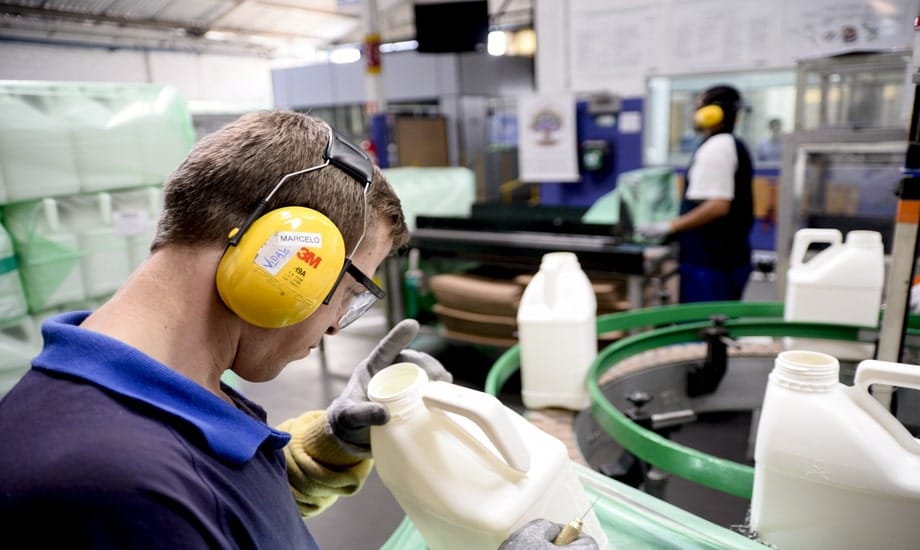
Greif Hadımköy 达到并超过 90% 的废物转化目标
2020 年,土耳其的 Hadımköy 团队通过评估其废物流并确定减少进入垃圾填埋场的废物的途径,制定了废物路线图。Hadımköy 团队在生产过程中引入了纸质废物分类箱,将剩余的食物垃圾分类并送往当地的动物收容所,并在自助餐厅引入了包装和纸质废物分类箱。总的来说,这些努力使他们的垃圾填埋量减少了 7%。到 2020 年底,Hadımköy 利用其废物路线图中的项目进一步减少了 5% 的垃圾填埋量,并且已经超过了公司 2025 年的废物目标。
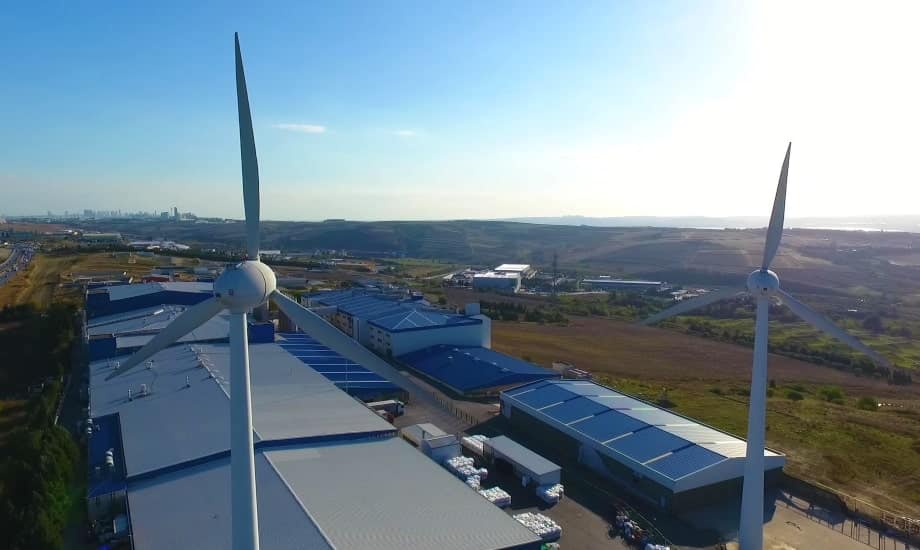
通过使用水性外墙涂料减少挥发性有机化合物 (VOC)
Greif 承诺在运营过程中尽可能使用水性外墙涂料,而不是高挥发性有机化合物 (VOC) 外墙涂料。在全球工业包装 (GIP) 北美,我们的九家钢铁厂中有八家使用水性涂料。在 GIP 中国,Greif 珠海工厂已改用 70% 的水性涂料,并于 2020 年开始测试在我们的产品中使用水性普通滚筒衬垫,以进一步降低我们产品的 VOC 影响。
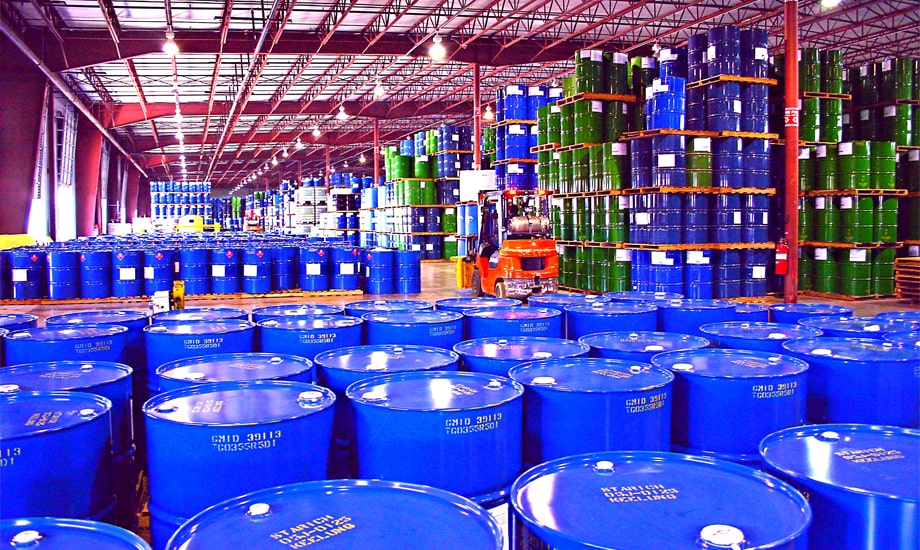
通过卓越的客户服务减少浪费
2019 年,瑞典的 Greif 全球工业包装 (GIP) 工厂收到客户投诉,称由于包裹货盘的塑料薄膜太紧且难以去除,导致油罐在拆包过程中受损。为此,工厂测试了多种更容易去除且损坏油罐的风险较小的薄膜替代品,最终选择了一种替代品,将薄膜使用量减少了 48%,每年可节省 7,500 公斤材料。此次转型还带来了 $12,000 美元的节省和 22,000 公斤的减排。为了扩大项目规模,团队更新了使用类似薄膜的标准操作程序,并与我们的采购团队合作更新了薄膜的供应商和材料。
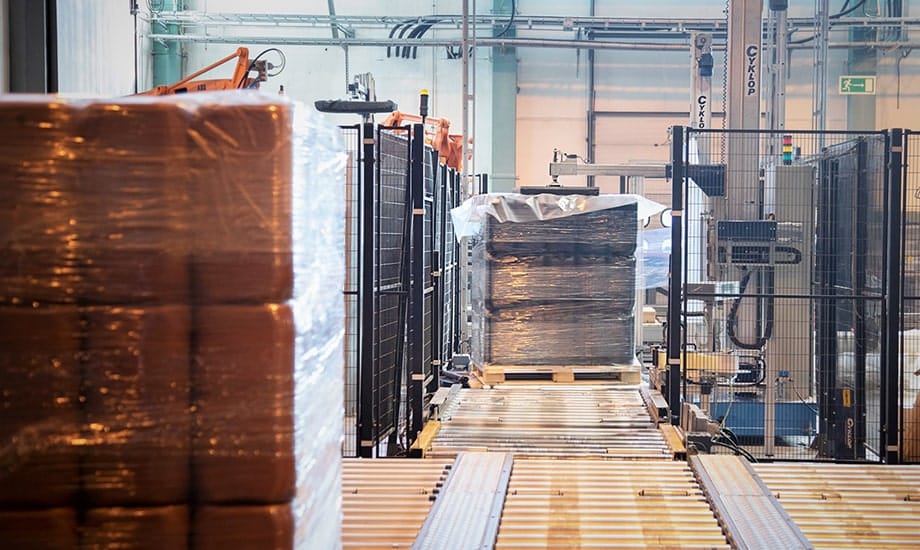
Greif Riyadh 通过处理废水减少废物
2017 年,位于沙特阿拉伯利雅得的 Greif 全球工业包装 (GIP) 工厂是 EMEA 地区最大的垃圾填埋场,36% 的垃圾被填埋。通过分析他们的废物流,工厂团队确定这主要是由于废水造成的,如果处理得当,废水可以回收利用。尽管基础设施支持、回收合作伙伴和运输选择有限,但该团队建立了一个流程,将水在内部分离和清洁到当地运输商和回收商可接受的水平,并持续将水返回给他们。通过这些措施,该团队将水中的油含量从 60 ppm 降低到 1.5 ppm,并在 2019 年底将垃圾填埋率降低到 4%。由于沙特阿拉伯本身水资源匮乏,这一举措的影响远远超出了 Greif 的运营范围。通过这样的举措,Greif 能够为其他企业树立先例,并最终造福当地社区。
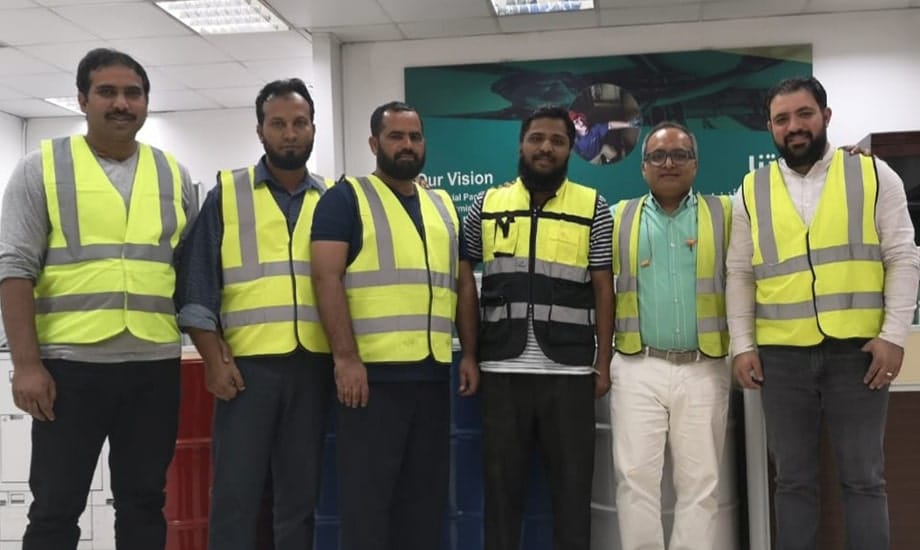
去除 IBC 印刷中的溶剂
Greif 位于瑞典法尔肯贝格的全球工业包装 (GIP) 工厂实施了一种创新的中型散装容器 (IBC) 印刷工艺,可减少浪费、消除印刷过程中溶剂的使用并提高制造过程的效率。通过用激光雕刻代替传统的喷墨打印来标记 IBC,该团队已从制造过程中消除了基于墨水的溶剂,并且无需在生产运行之间更换印版,从而创建了更高效的设施,并将所需树脂量减少了 6.7%。总的来说,这一变化每年将节省 $50,000 美元,并且可以轻松地在其他 Greif 工厂实施。
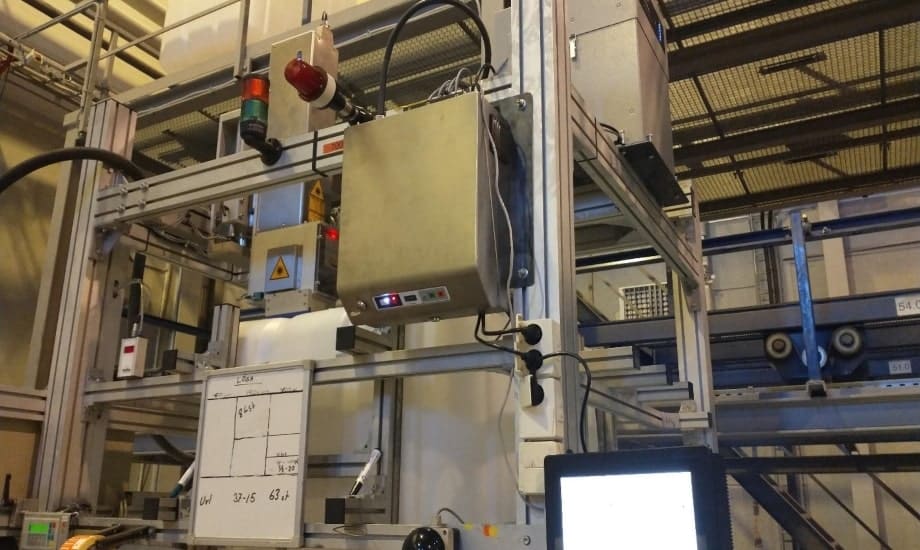
可持续发展亮点
71%
从垃圾填埋场转移的垃圾
我们在全球范围内努力减少浪费,每个工厂都在努力实现 2025 年的目标。





